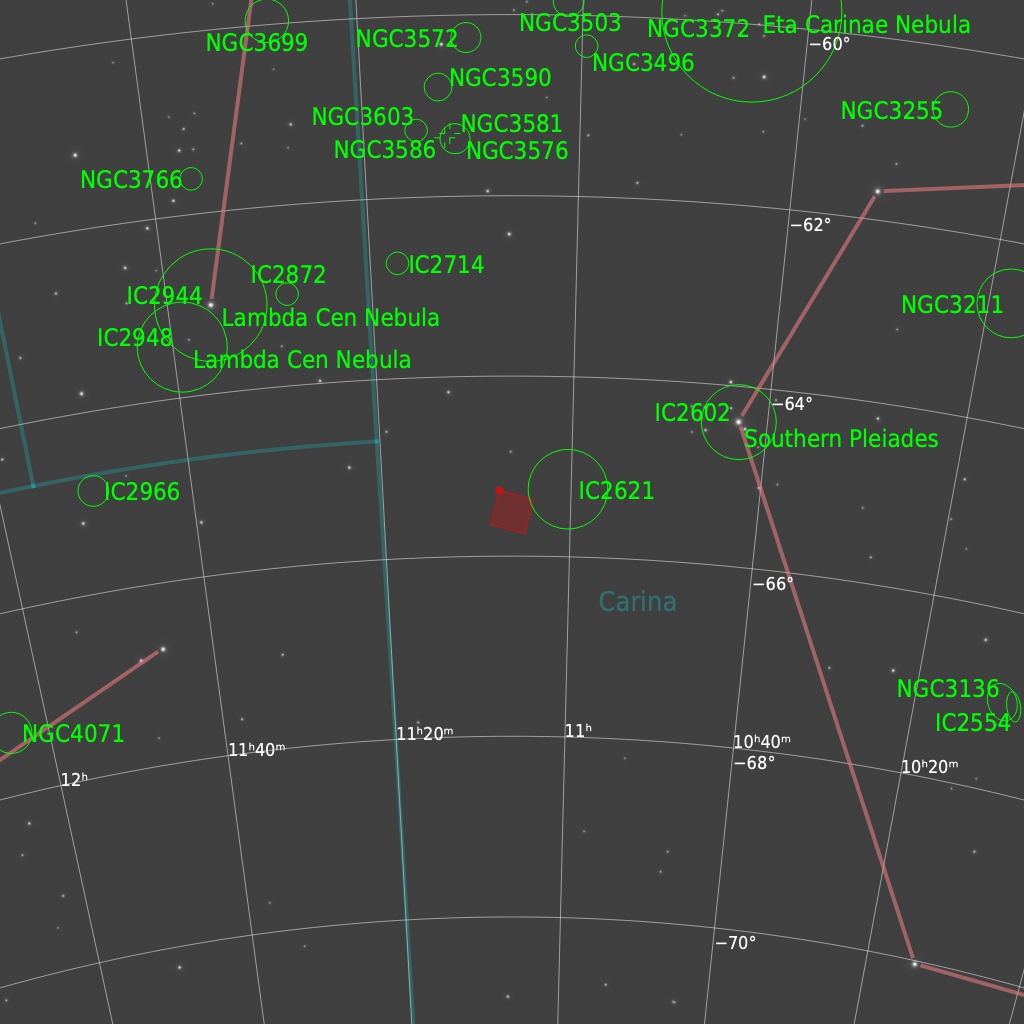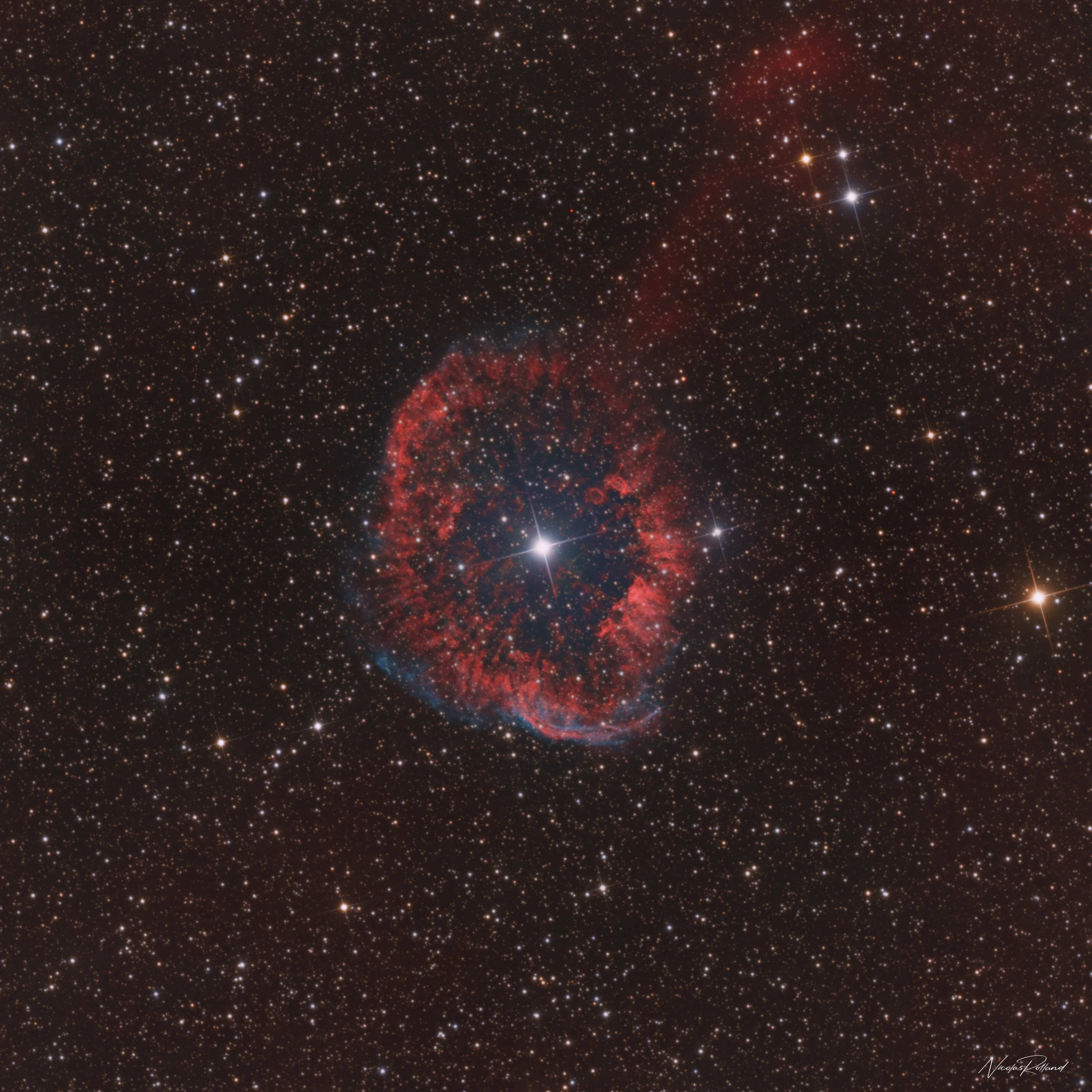WOLF RAYET
RCW 58
RCW58 is a nebula that envelops and originates from a Wolf-Rayet star, specifically WR40 (HD 96548, WN8). The central luminous blue star in the accompanying image is identified as WR40.
Wolf-Rayet stars, exemplified by WR40, boast considerable size, potentially reaching up to 20 times the mass of the Sun. As they undergo evolution, these stars shed mass at an extraordinary rate, generating powerful solar winds. Characterized by high temperatures ranging from 30,000 to 200,000 Kelvin, there are approximately 500 such stars cataloged within our Milky Way Galaxy. Emitting copious amounts of ultraviolet (UV) radiation, these stars ionize the surrounding nebula, causing it to illuminate and become visible. Most Wolf-Rayet stars are believed to eventually undergo a supernova explosion.
Observations of H alpha and OIII emissions from eight prominent Wolf Rayet ring nebulae in the Galaxy indicate that, in many instances, the outermost boundary of the OIII emission precedes the H alpha emission. This phenomenon suggests that the observed offsets are a result of the shockwaves produced by the expansion of the Wolf Rayet bubble into the circumstellar envelope.
This picture respects the Hubble Palette version (HOO): H-Alpha mapped to red, OIII mapped to the green and blue channel. While the colors in this image are not the true colors, the narrowband filters were used to create the nebula color.
TECHNICAL DATA
ACQUISITION DETAILS
OPTICS Planewave CDK17 @ F/6.8
CAMERA SBIG STXL-11002 (AOX)
MOUNT Paramount ME
FILTERS Ha, OIII, R, G, B
LOCATION El Sauce Observatory, Rio Hurtado, Chile
DATE May 2020
EXPOSURES 30.2 hours (Ha 24 x 1800 sec, OIII 24x 1800 sec, R 9 x 900 sec, G 8x 900 sec, B 8x 900 sec)
PROCESSING SOFTWARE Pixinsight, CCDstack, Photoshop
COPYRIGHTS Martin Pugh & Nicolas Rolland

TARGET DETAILS
RA 11h 06m 16.5s
DEC -65° 30' 34.3"
SIZE 23.7 x 23.7 arcmin
ORIENTATION Up is 14.8 degrees E of N
CONSTELLATION Carina
DISTANCE 16,000 ly
